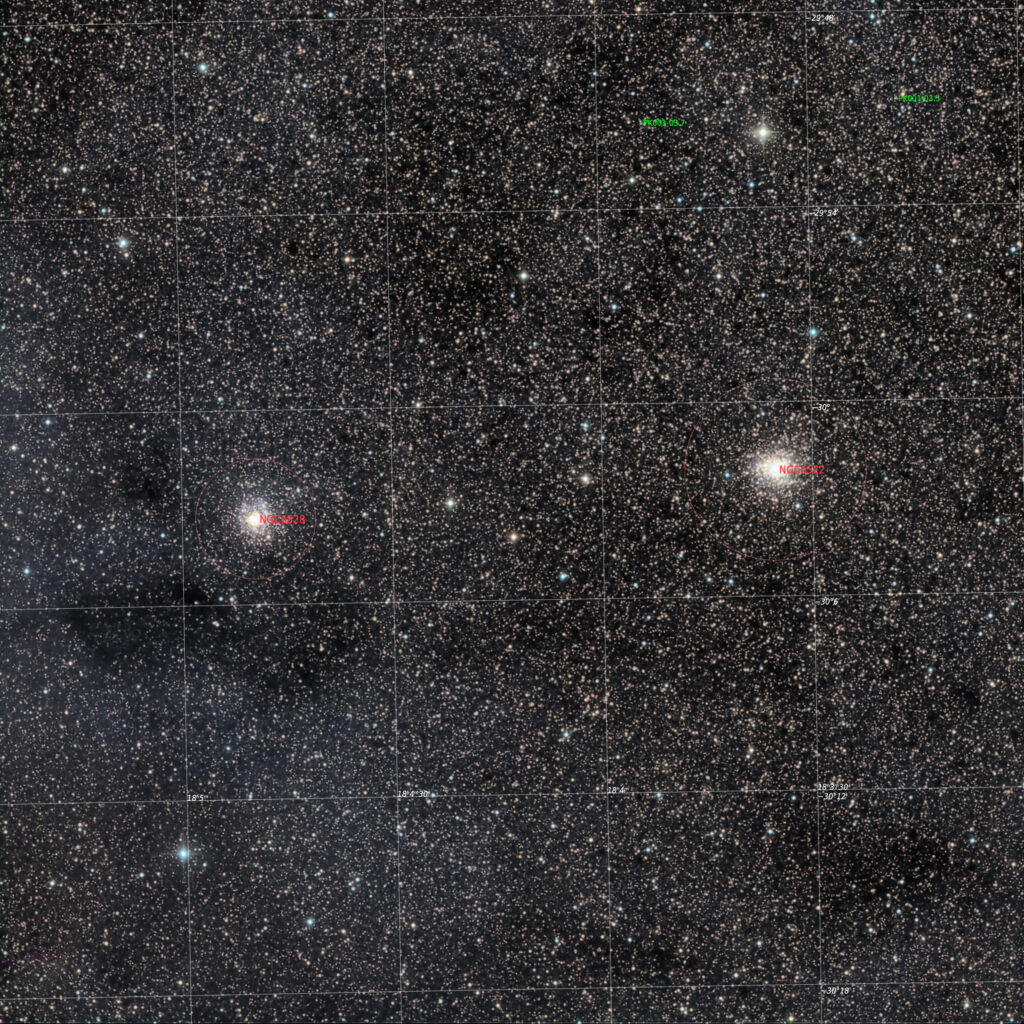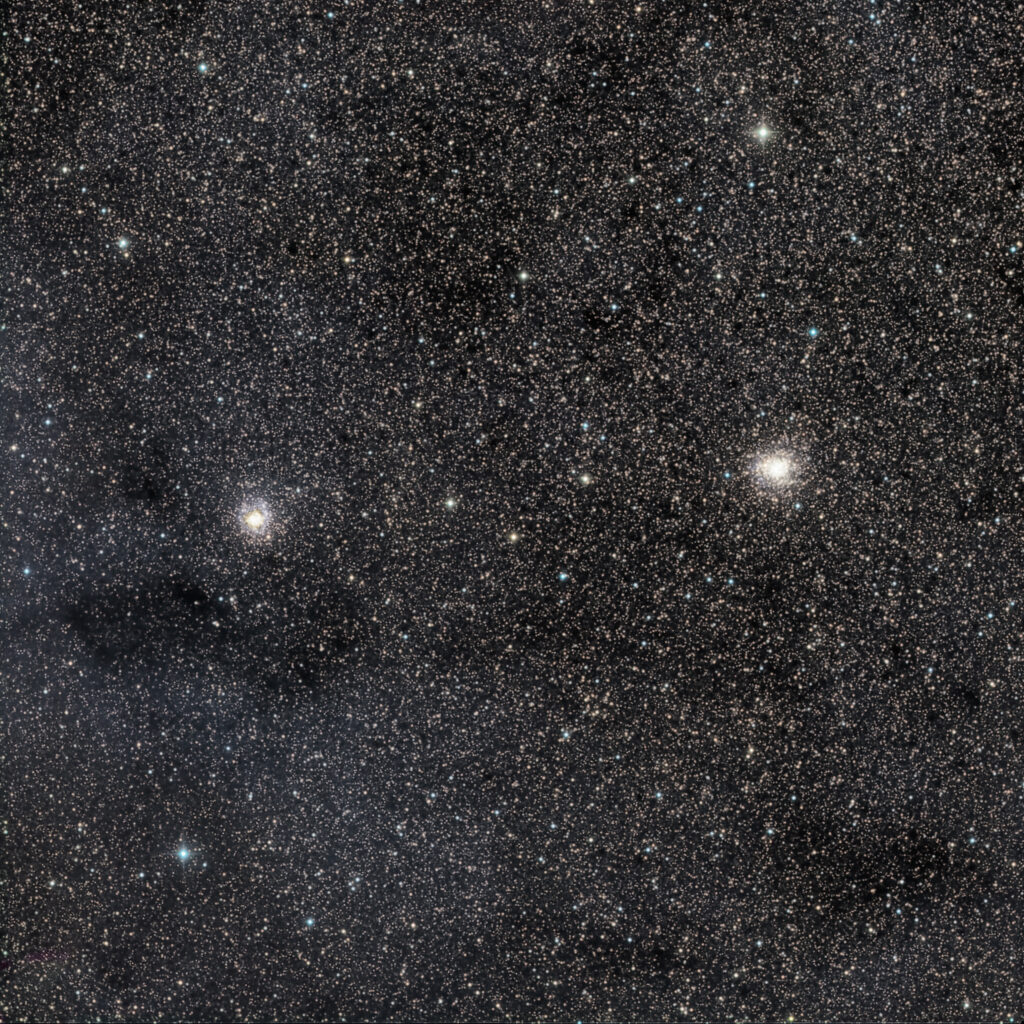Beade’s Window center: NGC6522 and NGC6528

Astrobin:
The obscuration of background objects by intervening dust towards the Galactic centre – Extinction – is generally very high, thus detailed studies of the central regions of our Galaxy are difficult.
There are small patches of sky along the line of sight to the Galactic centre that, by chance, suffer less extinction, and one of the largest and most famous of these is Baade’s Window which provides a relatively unobscured view of a region 4 degrees (~2,000 light years) south of the Galactic centre, with centre approximately located by NGC6522 star cluster.
Most of our knowledge of the stars in the bulge of the Milky Way is derived from studies in Baade’s Window.
It is named for astronomer Walter Baade, who first recognized its significance.
This area corresponds to one of the brightest visible patches of the Milky Way.
It is centered at a galactic longitude (l) of 1.02° and a galactic latitude (b) of -3.92°,[1] which corresponds to a right ascension of 18h 03m 32.14s and a declination of -30d 02m 06.96s, in the direction of the constellation Sagittarius.

According to Barbuy et Al. 2009, NGC6522 is possibly the oldest star cluster in the Milky Way, and Chiappini et Al., 2011 evaluated its age of about 12 billion years; cfr. “VLT-FLAMES Analysis of 8 giants in the Bulge Metal-poor Globular Cluster NGC 6522: Oldest Cluster in the Galaxy?” by B. Barbuy et al., 2009 [https://arxiv.org/abs/0908.3603] , and “Imprints of fast-rotating massive stars in the Galactic Bulge” by Cristina Chiappini et al., Nature 472, pp. 454–457 (28 April 2011) [https://www.nature.com/articles/nature10000]
NGC 6528 is located southwest of NGC 6522 and also presents unusually metal-richness for a globular cluster. A very similar composition with NGC 6553 suggests an origin in a similar environment; cfr.: “Chemical analysis of NGC 6528: one of the most metal-rich bulge globular cluster” by Muñoz, C.et Al., 2018 [https://arxiv.org/abs/1809.04164]
In this work I separately processed LRGB integration and L masterframe by PixInSight: after normal routine (bg removing, Spectrophotometric CC, Deconvolution and denoising) I thus preferred to separate LRGB stars from starless data, thus to proceed to the final image recomposition in Photoshop with 3 main levels group (and relative fixing and adjustments) with starless on the bottom, stars blending in screen mode, and luminance as top layer blending in luminosity.